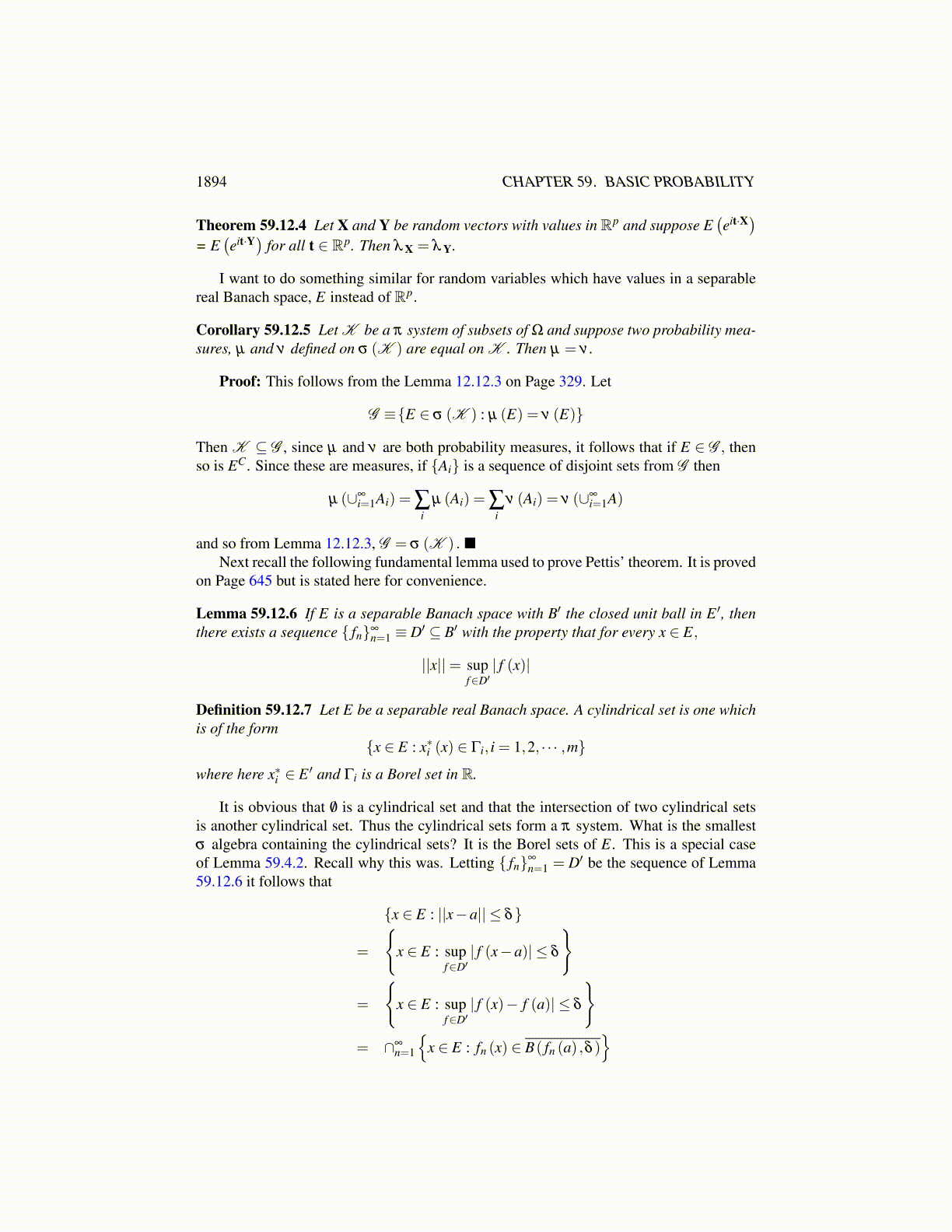
1894 CHAPTER 59. BASIC PROBABILITY
Proof: For the sake of brevity, denote by Y the vector (Y1, · · · ,Yk) and by y the vector(y1, · · · ,yk) and let ∏
kj=1Rp j ≡ RP. For E a Borel set of Rn,∫Y−1(E)
XdP =∫Rn×RP
XRn×E (x,y)xdλ (X,Y)
=∫
E
∫Rn
xdλ X|ydλ Y. (59.11.20)
Consider the functiony→
∫Rn
xdλ X|y.
Since dλ Y is a Radon measure having inner and outer regularity, it follows the abovefunction is equal to a Borel function for λ Y a.e. y. This function will be denoted by g.Then from 59.11.20∫
Y−1(E)XdP =
∫E
g(y)dλ Y =∫RP
XE (y)g(y)dλ Y
=∫
Ω
XE (Y(ω))g(Y(ω))dP
=∫
Y−1(E)g(Y(ω))dP
and since Y−1 (E) is an arbitrary element of σ (Y) , this shows that since X is σ (Y) mea-surable,
X = g(Y) P a.e.
What about the case where X is not necessarily measurable in σ (Y1, · · · ,Yk)?
Lemma 59.11.4 There exists a unique function Z(ω) which satisfies∫F
X(ω)dP =∫
FZ(ω)dP
for all F ∈ σ (Y1, · · · ,Yk) such that Z is σ (Y1, · · · ,Yk) measurable. It is denoted by
E (X|σ (Y1, · · · ,Yk))
Proof: It is like the above. Letting E be a Borel set in Rp,∫Y−1(E)
XdP =∫Rn×RP
XRn×E (x,y)xdλ (X,Y)
=∫
E
∫Rn
xdλ X|ydλ Y.
Now let g(y)≡ E (X|y1, · · · ,yk) be a Borel representative of∫Rn
xdλ X|y